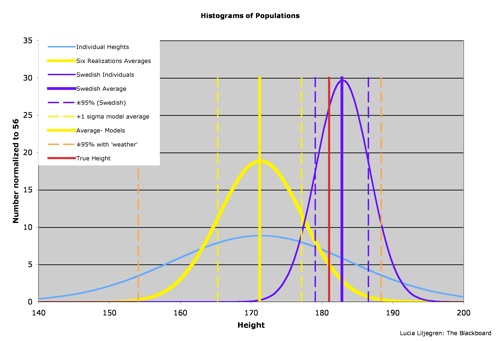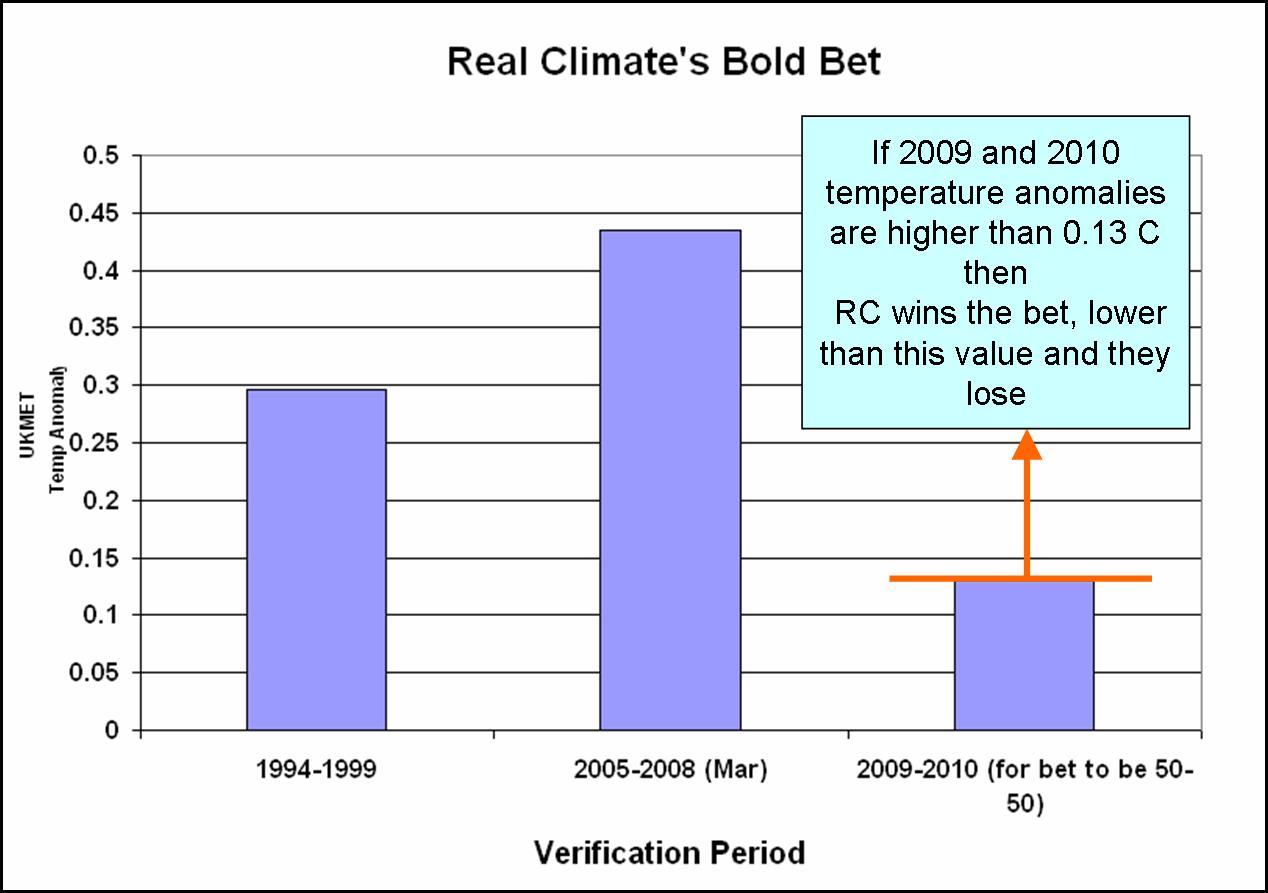Scientists are fond of explaining that recent observations of the climate are “consistent with” predictions from climate models. With this construction, scientists are thus explicitly making the claim that models can accurately predict the evolution of those climate variables. Here are just a few recent examples:
“What we are seeing [in recent hurricane trends] is consistent with what the global warming models are predicting,” Thomas Knutson, a research meteorologist at a National Oceanic and Atmospheric Administration laboratory in Princeton, N.J., said Friday.
link
In a change that is consistent with global warming computer models, the jet streams that govern weather patterns around the world are shifting their course, according to a new analysis by the Carnegie Institution published in Geophysical Research Letters.
link
Francis Zwiers, the director of the climate research division of Environment Canada, said research consistently showed the addition of sulfate aerosols and greenhouse gases such as carbon dioxide into the atmosphere has changed rainfall patterns in the Arctic. Zwiers and his colleagues made their findings using 22 climate models that looked at precipitation conditions from the second half of the 20th century. Writing in the journal Science, Zwiers said these findings are consistent with observed increases in Arctic river discharge and the freshening of Arctic water masses during the same time period.
link
The fact that we are seeing an expansion of the ocean’s least productive areas as the subtropical gyres warm is consistent with our understanding of the impact of global warming. But with a nine-year time series, it is difficult to rule out decadal variation. link
All of this talk of observations being “consistent with” the predictions from climate models led me to wonder — What observations would be inconsistent with those same models?
Logically, for a claim of observations being “consistent with” model predictions to have any meaning then there also must be some class of observations that are “inconsistent with” model predictions. For if any observation is “consistent with” model predictions then you are saying absolutely nothing, while at the same time suggesting that you are saying something meaningful. In other contexts this sort of talk is called spin.
So I have occasionally used this blog to ask the question — what observations would be inconsistent with model predictions?
The answer that keeps coming up is “no observations” — though a few commenters have suggested that a temperature change of 10 degrees C over a decade would be inconsistent, as too would be the glaciation of NYC over the next few years. These responses certainly are responsive, but I think help to make my point.
Others, such as climate modeler James Annan, suggest that my goal is to falsify global warming theory (whatever that is):”no-one is going to “falsify” the fact that CO2 absorbs LW radiation”. No. James is perhaps trying to change the subject, as I am interested in exactly what I say I am interested in — to understand what observations might be inconsistent with predictions from “global warming models,” in the words of climate modeler Tom Knutson, cited above.
Others suggest that by asking this questions I am providing skeptics with “talking points.” The implication I suppose is that I should not be looking behind the curtain, lest I find a little wizard at the controls and reveal that we are all actually in Oz. How silly is this complaint? If the political agenda of those wanting action on climate change is so sensitive to someone asking questions of climate models that it risks collapsing, then it is a pretty frail agenda to begin with. I actually do not think that it is so frail, and in fact, my view is that the science, and policies justified based on scientific claims, will be stronger by openly discussing these issues.
A final set of reactions has been that climate models only predict trends over the long-term, such as 30 years, and that anyone looking to examine short-term climate behavior is either stupid or willfully disingenuous. It is funny how this same complaint is not levied at those scientists making claims of “consistent with,” such as in those examples listed above. Of course, any time period can be used to compare model predictions with observations — uncertainties will simply need to be presented as a function of the time period selected. When scientists (and others) argue against rigorously testing predictions against observations, then you know that the science is in an unhealthy state.
So, to conclude, so long as climate scientists make public claims that recent observations of aspects of the climate are “consistent with” the results of “global warming models,” then it is perfectly appropriate to ask what observations would be “inconsistent with” those very same models. Until this follow up question is answered in a clear, rigorous manner, the incoherent, abusive, and misdirected responses to the question will have to serve as answer enough.

